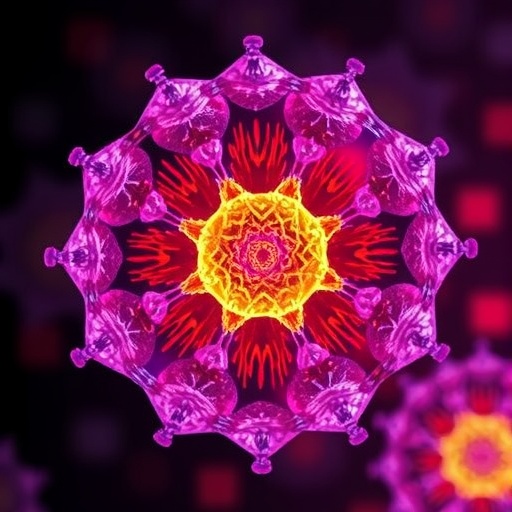In recent years, the development of efficient and durable electrocatalysts for proton-exchange membrane fuel cells (PEMFCs) has remained one of the most formidable challenges in the pursuit of sustainable energy technologies. While platinum group metal (PGM) catalysts have dominated the field due to their exceptional oxygen reduction reaction (ORR) activity, their scarcity and high cost have driven researchers to explore more abundant alternatives. Among these, iron and nitrogen-doped carbon (Fe/N–C) catalysts have emerged as front-runners, promising to deliver PGM-level performance at a fraction of the cost. Yet, despite significant progress, their practical application has been hampered by persistent issues related to catalytic activity and long-term stability within acidic environments.
The performance bottlenecks of Fe/N–C catalysts primarily stem from two intertwined factors. First, the strong adsorption of oxygenated intermediates on active sites restricts catalytic turnover, leading to suboptimal kinetics during the ORR. Second, and perhaps more critically, the Fe species embedded within the nitrogen-doped carbon matrix are susceptible to demetallization through the notorious Fenton reaction, which generates hydroxyl radicals that degrade the catalyst structure over time. This intrinsic instability under acidic fuel cell operating conditions has so far prevented Fe/N–C catalysts from competing effectively against their platinum-based counterparts.
Addressing these challenges head-on, a groundbreaking study introduces a novel Fe/N–C catalyst architecture that harnesses the unique properties of curved carbon supports adorned with nanoprotrusions. Designed at the atomic scale, these nanostructured protrusions feature single Fe atoms predominantly embedded within the inner curved surfaces, offering an unprecedented local electronic environment that fundamentally alters catalytic behavior. This geometric innovation not only favors the interaction dynamics of oxygen reduction intermediates but also fortifies the catalyst against radical-induced degradation.
.adsslot_UfdPlYA02g{ width:728px !important; height:90px !important; }
@media (max-width:1199px) { .adsslot_UfdPlYA02g{ width:468px !important; height:60px !important; } }
@media (max-width:767px) { .adsslot_UfdPlYA02g{ width:320px !important; height:50px !important; } }
ADVERTISEMENT
The synthesis of such a complex catalyst involves precise engineering of two-dimensional carbon layers, onto which numerous nanoscale protrusions are uniformly dispersed. Each protrusion is graphitized with an outer carbon shell, an essential modification that enhances the structural stability and electronic conductivity of the support. By situating single Fe atoms within the concave interior of these curved protrusions, the catalyst achieves an optimal balance between active site accessibility and protection from aggressive chemical species.
Electrochemical evaluations reveal that this new Fe/N–C catalyst exhibits remarkably attenuated binding strength towards oxygenated reaction intermediates compared to conventional planar Fe/N–C analogs. This moderation in adsorption energies results in substantially improved ORR kinetics under acidic conditions, a critical requirement for PEMFC applications. Furthermore, the graphitized carbon layers surrounding the nanoprotrusions effectively suppress the formation of hydroxyl radicals by mitigating the Fenton reaction pathway, thus prolonging catalyst lifespan during sustained fuel cell operation.
Remarkably, in proton-exchange membrane fuel cell tests performed under practical conditions—1.0 bar hydrogen-air environment—this catalyst achieves a record high power density of 0.75 W cm⁻². What distinguishes this performance is not only its magnitude but also its durability, with the system maintaining 86% of its initial activity after continuous operation exceeding 300 hours. This durability, paired with the high catalytic activity, positions this innovative Fe/N–C catalyst as one of the most promising candidates to rival PGM catalysts in commercial fuel cell systems.
The implications of this advancement extend far beyond incremental improvements in catalyst design. By demonstrating that atomic-scale engineering of support curvature and local environment can decisively influence ORR activity and stability, this work opens new frontiers for the rational design of PGM-free electrocatalysts. The interplay between catalyst morphology, electronic structure, and dynamic reaction conditions can now be exploited more deliberately to break longstanding performance trade-offs.
Crucially, the findings invite a reevaluation of the traditional paradigms guiding catalyst development. Instead of relying solely on the composition and chemical identity of active sites, the research emphasizes the role of three-dimensional nanostructure and surface curvature in tailoring catalytic behaviors. This insight may inspire future innovations across a range of electrocatalytic reactions where similar challenges exist, such as CO₂ reduction and hydrogen evolution reactions.
Beyond the scientific novelty, the environmental and economic impact of deploying such catalysts cannot be overstated. Fuel cells powered by PGM-free catalysts capable of delivering sustained high performance promise to drastically reduce dependence on scarce and expensive noble metals, facilitating more widespread adoption of clean energy technologies. This progress aligns with global initiatives to decarbonize transportation and energy generation sectors through scalable, affordable solutions.
From a mechanistic perspective, the stabilization of Fe single atoms on the curved carbon supports potentially mitigates dissolution and aggregation processes. The curvature-induced electronic effects tune the local charge density and coordination environment, which likely weaken the adsorption energies of detrimental intermediates without compromising the catalytic turnover. This delicate balance accounts for the observed synergy in activity and stability, underscoring the importance of atomic-scale morphology control.
In addition to experimental validation, advanced spectroscopic and microscopic characterization techniques provide atomic-level confirmation of the catalyst structure and single-atom dispersion. These insights support the theoretical framework explaining how the physical geometry translates into improved catalytic properties. Such comprehensive understanding is vital for translating laboratory success into industrial processes.
The work further exemplifies the power of integrating theory-driven design, precise nanofabrication, and rigorous electrochemical testing in advancing electrocatalyst science. It represents a model pathway for future research efforts targeting the complex catalytic landscapes inherent to energy conversion devices. Researchers and industry stakeholders alike will keenly watch how this innovation evolves toward commercial readiness.
In sum, the development of single-atom Fe catalysts on curved carbon supports heralds a new chapter in PEM fuel cell technology. By elegantly solving the dual problems of activity and durability through nanoscale engineering, this research delivers a compelling vision for accessible, effective, and sustainable fuel cell catalysts that move the field closer to large-scale clean energy implementation.
Subject of Research: Proton-exchange membrane fuel cells, Fe/N–C electrocatalysts, oxygen reduction reaction, single-atom catalysts, catalyst durability
Article Title: Acidic oxygen reduction by single-atom Fe catalysts on curved supports
Article References:
Zhao, Y., Wan, J., Ling, C. et al. Acidic oxygen reduction by single-atom Fe catalysts on curved supports. Nature (2025). https://doi.org/10.1038/s41586-025-09364-6
Image Credits: AI Generated
Tags: affordable fuel cell catalystscatalytic activity in acidic environmentsenhancing Fe/N–C performanceFenton reaction and catalyst stabilityiron nitrogen-doped carbon catalystslong-term stability of electrocatalystsovercoming catalytic bottlenecksoxygen reduction reaction kineticsPGM alternatives for ORRproton exchange membrane fuel cellssingle-atom iron electrocatalystssustainable energy technologies





